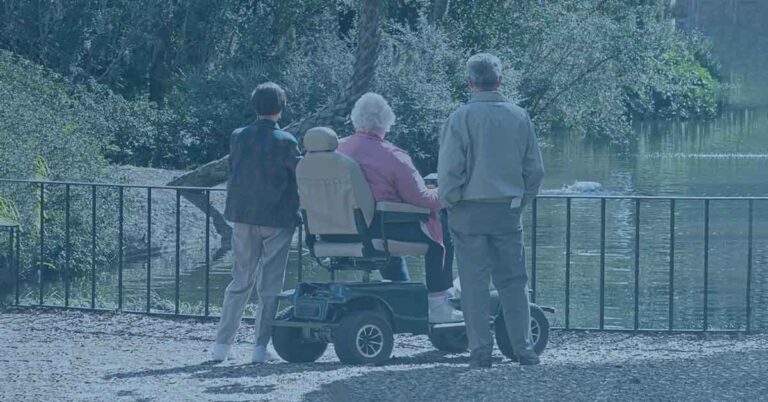Cane vs Crutches: When to Use Canes for Stability? Comprehensive Guide
If you have mobility problems, you may need a walking aid to help you balance and move around.
Canes and crutches are two common options but have different advantages and disadvantages. How do you decide which one is better for your situation and needs?
Key takeaways
- Benefits of canes: easy to use, stable support, various choices, less noticeable.
- When to use a cane instead of crutches: mild support is needed, better movement, easier daily activities, faster healing process.
- Consider: type, handle design, material, and height adjustment.
- Disadvantages of using a cane: insufficient support for non-weight bearing injuries, less stability than some other aids, difficulty on uneven surfaces and stairs, the strain on the upper body.
In this article, we will explain the benefits and drawbacks of canes and crutches and give you some tips on choosing the right walking aid for your condition.
1. Benefits of Using a Cane
Here are some reasons why a cane may be better than crutches for you:
- Easy to use: A cane is simple to move and does not require much arm strength. It suits people who find crutches difficult or tiring or have weak arms.
- Stable support: A cane provides more stability than crutches on uneven or steep surfaces. It can help you prevent falls if you have weak legs or leg issues.
- Variety of choices: You can find canes in different types, such as foldable canes that are easy to store or carry or quad canes with four points at the bottom for extra stability.
- Social comfort: A cane is less noticeable than crutches when you walk.
- Freedom of movement: A cane allows you to move freely without changing your position often.
A cane can improve your quality of life and safety if you need a walking aid. However, you should consider the drawbacks of using a cane before deciding.
2. Disadvantages of Using a Cane
Here are some of the disadvantages of using a cane as a walking aid:
A) Not Enough Support for Non-Weight Bearing Injuries
If you have an injury that prevents you from putting any weight on your foot or leg, a cane will not be enough to support you. You will need crutches to keep your injured leg off the ground and balance well.
B) Less Stable Than Other Walking Aids
A cane is less stable than other walking aids like walkers or crutches. It may not be enough for people who need more support because of poor balance or severe leg weakness.
C) Hard to Use on Uneven Surfaces and Stairs
Uneven surfaces: A cane may not work well on rough ground because it only touches the ground at one point.
Crutches or walking sticks, which touch the ground at two points, provide more stability on uneven surfaces.
Stairs: A cane can make stairs difficult, especially if you have an injured leg that cannot bear weight.
Crutches can help you go up and down stairs safely by giving extra support and distributing your weight evenly between both arms and legs.
D) Strain on the Upper Body
A cane makes you rely more on your upper body, which can cause fatigue and pain with long use. This is especially true for people with weak arms or problems in their shoulders, wrists, or elbows.
Crutches can reduce the strain on your upper body by spreading your weight more evenly across both arms and legs.
E) Trouble in Seated Position
A cane can be awkward when moving from standing to sitting because you have to hold it or put it away while sitting down.
Crutches can give better support during this transition because they can stay under your arm while you sit down (you can read more in this Healthline article on how to use crutches in any situation).
Before picking one, you should weigh the pros and cons of using a cane. Crutches may offer more stability than a cane but may also cause discomfort or pain in some parts of your body.
When to Use a Cane Instead of Crutches
In some situations, a cane may be better than crutches for your safety and comfort. Here are some examples:
- Less support needed: If you only need a little help with balance and stability, such as if you have a weak leg or mild joint pain, a cane may be enough for you. Crutches are more suitable for non-weight-bearing injuries that need more support.
- Better movement: A cane lets you move through narrow spaces and crowded places easier than crutches.
- Easier daily activities: A cane requires less arm strength than crutches, making it easier to do everyday things like opening doors or carrying things.
- Faster healing process: For some people recovering from a leg injury, switching from crutches to a cane may help them heal faster by gradually increasing weight-bearing on the injured leg.
In summary, a cane might be the right option over crutches if you have mild mobility problems that do not need much support and want better movement during daily activities.
Read more: What is the price of crutches?
How to Choose the Right Cane
A cane can help you walk safely and comfortably if you choose the right one for your needs and lifestyle (read more: Safety tips when using a walking cane).
Here are some factors to consider when choosing a cane:
Types of Canes
There are different types of canes with different features and purposes:
- Single-Point Canes: These canes have one point at the bottom for basic support and balance.
- Quad Canes: These canes have four points at the bottom for more stability but may be heavier.
- Hemi-Walkers: These canes support people with limited use of one hand or arm and are lighter than walkers.
- Folding Canes: These canes fold into smaller parts for easy travel or storage.
- Handle Designs: The handle design affects your comfort and grip when using a cane. Some common handles are:
- Crook Handles: These handles have a classic curved shape for an easy grip.
- T-Handles: These handles have a wider grip area for people with weak hands or arthritis.
- Ergonomic Handles: These handles reduce pressure on the wrist and hand and fit the user’s palm well.
- Material Choices: The material of a cane affects its weight, durability, and look. You can find wood, aluminum, carbon fiber, and steel canes. Wood canes look classic and feel natural, while aluminum or carbon fiber canes are lightweight and durable.
- Height Adjustment Features: A wrong-sized cane may cause pain or injury due to the wrong posture. It is important to pick a cane with height adjustment features to fit your needs for the best support.
The Bottom Line
A cane can be a good option instead of crutches for those who can walk well but have non-weight-bearing injuries or weak legs.
It has some drawbacks, like not enough support and the need for proper sizing/technique, but better mobility and independence make it worth trying.
When picking a cane, consider handle type, material, height adjustability, weight capacity, and other features like foldability or grip padding.
For more help finding the best walking aid for your needs or other senior care tips, visit SeniorSupported.com.


